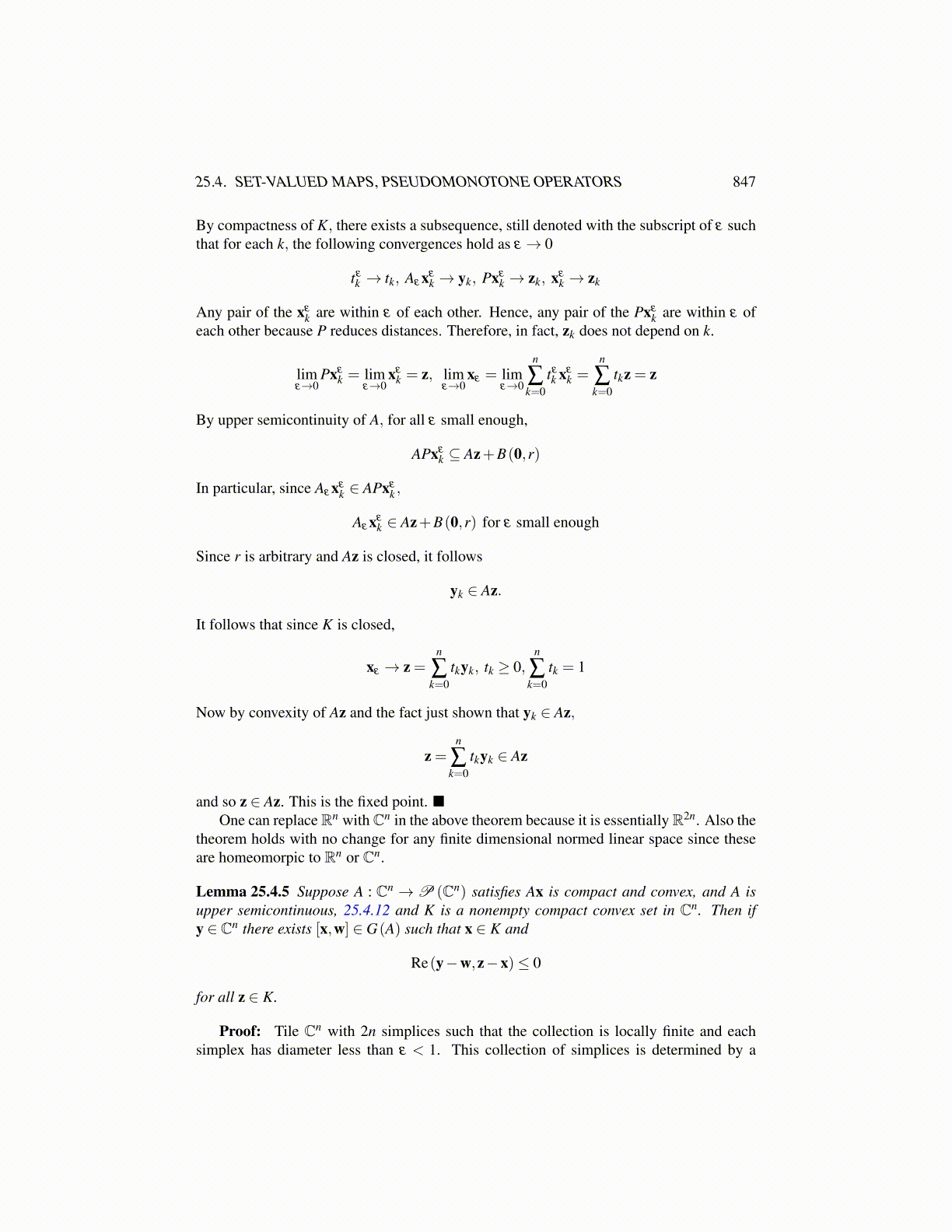
25.4. SET-VALUED MAPS, PSEUDOMONOTONE OPERATORS 847
By compactness of K, there exists a subsequence, still denoted with the subscript of ε suchthat for each k, the following convergences hold as ε → 0
tεk → tk, Aε xε
k → yk, Pxεk → zk, xε
k → zk
Any pair of the xεk are within ε of each other. Hence, any pair of the Pxε
k are within ε ofeach other because P reduces distances. Therefore, in fact, zk does not depend on k.
limε→0
Pxεk = lim
ε→0xε
k = z, limε→0
xε = limε→0
n
∑k=0
tεk xε
k =n
∑k=0
tkz = z
By upper semicontinuity of A, for all ε small enough,
APxεk ⊆ Az+B(0,r)
In particular, since Aε xεk ∈ APxε
k ,
Aε xεk ∈ Az+B(0,r) for ε small enough
Since r is arbitrary and Az is closed, it follows
yk ∈ Az.
It follows that since K is closed,
xε → z =n
∑k=0
tkyk, tk ≥ 0,n
∑k=0
tk = 1
Now by convexity of Az and the fact just shown that yk ∈ Az,
z =n
∑k=0
tkyk ∈ Az
and so z ∈ Az. This is the fixed point.One can replaceRn withCn in the above theorem because it is essentiallyR2n. Also the
theorem holds with no change for any finite dimensional normed linear space since theseare homeomorpic to Rn or Cn.
Lemma 25.4.5 Suppose A : Cn →P (Cn) satisfies Ax is compact and convex, and A isupper semicontinuous, 25.4.12 and K is a nonempty compact convex set in Cn. Then ify ∈ Cn there exists [x,w] ∈ G(A) such that x ∈ K and
Re(y−w,z−x)≤ 0
for all z ∈ K.
Proof: Tile Cn with 2n simplices such that the collection is locally finite and eachsimplex has diameter less than ε < 1. This collection of simplices is determined by a